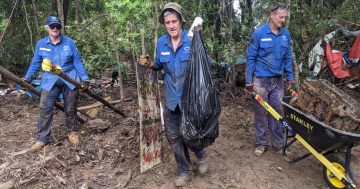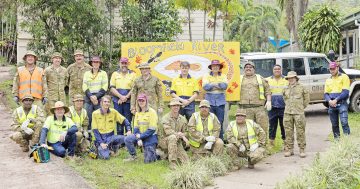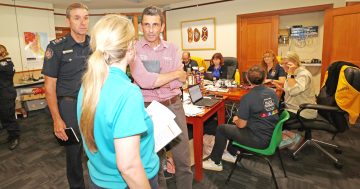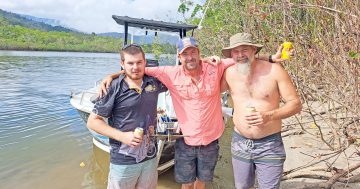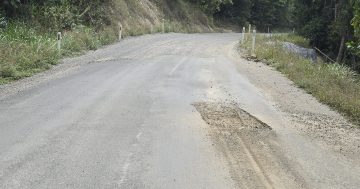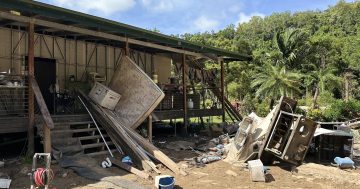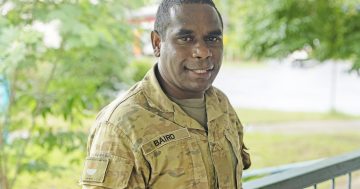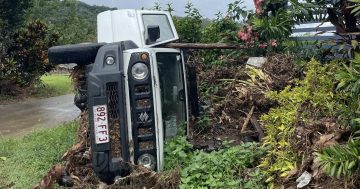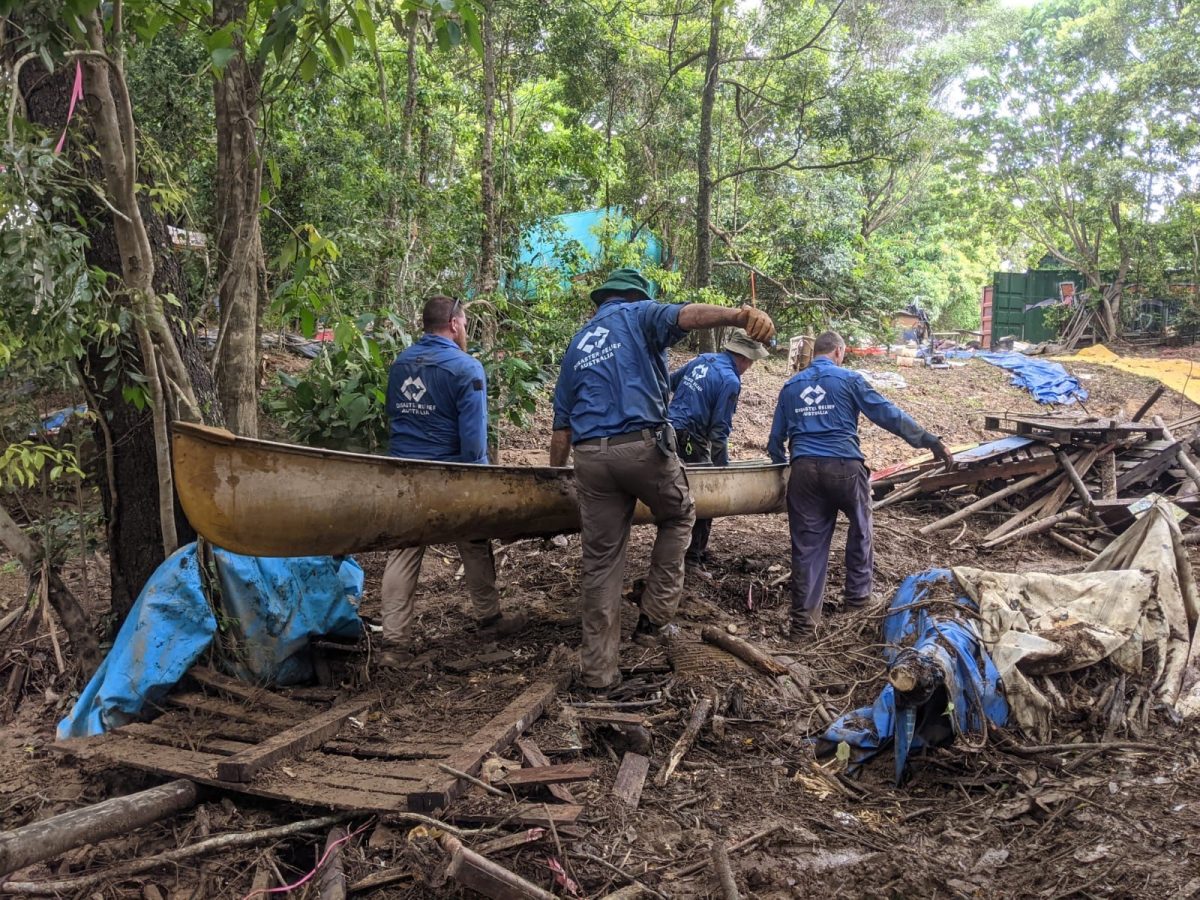
Disaster Relief Australia strike team members Scott Warnes, Dean Girdler, Peter Fowles and Dean Martin remove debris as part of the Operation Baird clean-up effort in the Bloomfield region. Photo: Supplied.
Their blue shirts are different to the camouflage uniforms most would associate with bodies on the ground following a natural disaster, but they are a welcome sight in communities in the Bloomfield region devastated by flooding in the wake of Tropical Cyclone Jasper.
The shirts belong to strike team members of Disaster Relief Australia (DRA), who have converged on Wujal Wujal, Ayton and Degarra as part of Operation Baird to assist with the mammoth recovery the communities now face after floodwater decimated homes and critical infrastructure in December 2023.
Established in 2016, DRA has positioned itself as an alternative to deploying the Australian Defence Force (ADF) in disasters by utilising the skills and experience of military veterans, emergency responders and civilians to lead relief missions.
Ben Lesslie is the mission commander leading the recovery operation in the three communities and told the Cape York Weekly his team had been shocked by the damage that confronted them when they arrived earlier this month.
“It’s next-level destruction compared to what we’re seeing in other parts of Australia with flooding events,” he said.
“It took 11 team members a full day to sort out one job.
“The whole house was completely submerged in water, so it was a complete strip out through two or three foot of mud.”
Mr Lesslie explained volunteers worked with residents when going through flood-damaged properties to save important possessions.
“We strip the whole house and go through belongings to ensure we aren’t throwing out anything of value, and work with the residents to see what they want to keep and what they want to throw.
“We remove the mud, carpet and gyprock to provide that starting point [for repair].”
While determining where to start the clean-up effort would be daunting for even the most seasoned disaster relief volunteer, Mr Lesslie explained that engaging ADF veterans and former emergency service professionals streamlined the task.
“That’s why we target vets and first responders, because they do come with a high level of capability and skillset,” Mr Lesslie, who has a firefighting and corrective services background, told the Cape York Weekly.
“The work provides a sense of identity and purpose, and fills that desire to serve the community.”
The strike team is comprised of members from every corner of Australia, including Canberra, Melbourne and Western Australia’s Kimberley region.
Mr Lesslie, who hails from Wagga Wagga and is DRA’s NSW Disaster Relief Team manager, said Operation Baird members had been provided with additional motivation after basing themselves in the same location displaced flood victims were being accommodated.
“We’re living at Bloomfield Cabins and Camping,” he said.
“We’ve rented their outdoor area, so we’ve got a roof over our head, but it’s then [camp] stretchers on concrete.
“The team is surrounded by displaced residents, and community members were quite emotional and overwhelmed that we were actually here.
“They wanted to just come up and welcome us, and we listened to some of the stories they went through that night, so it gave background and context to what were were helping with.
“For the first few weeks, they felt like they had been forgotten.”
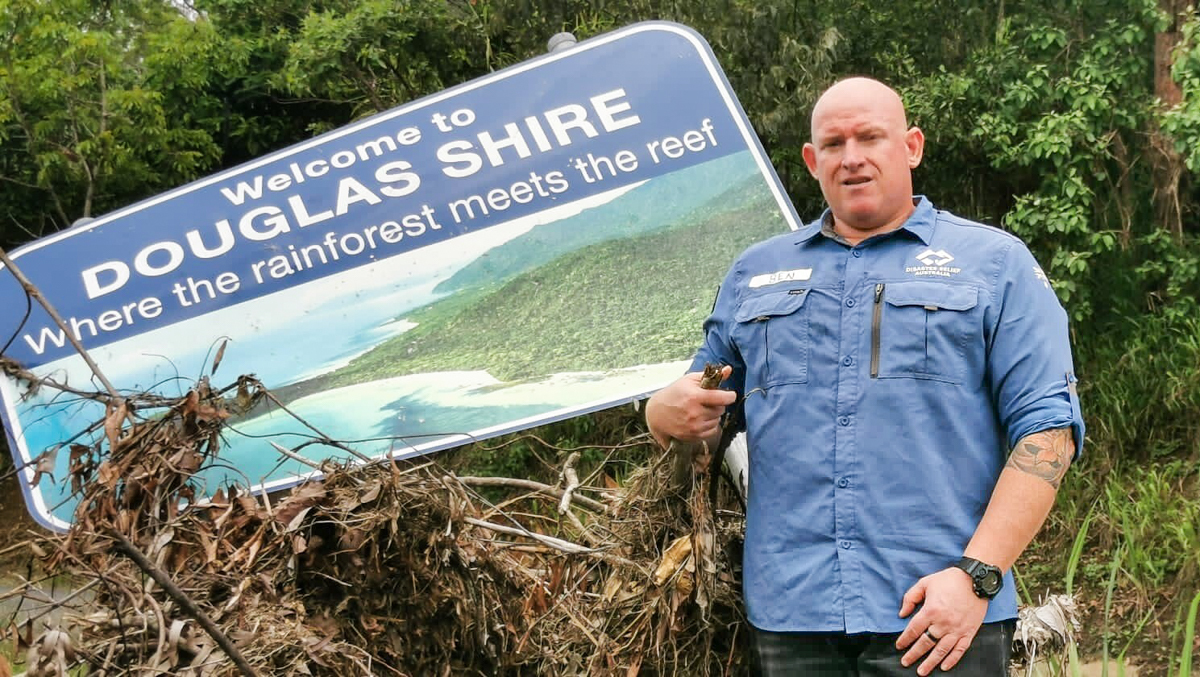
Ben Lesslie, Disaster Relief Australia’s mission commander for the organisation’s Tropical Cyclone Jasper flood recovery effort, says his team has encountered “next-level destruction” on Cape York not seen in previous flood clean-up campaigns across Australia. Photo: Supplied.
DRA operations are funded by the National Emergency Management Agency (NEMA) and the organisation has made history with its most current recovery operations.
“DRA is now a legitimate alternative to always deploying the ADF for recovery phases,” Mr Lesslie said.
“It gives the ADF a chance to get back to what their core function is.”
NEMA deployed DRA after the catastrophic Gold Coast storms in December 2023, the first time help not wearing ADF uniforms had been used as a primary response.
“What we’re doing in FNQ is the second time that’s happened,” Mr Lesslie said.
Before heading back to lead Operation Baird, Mr Lesslie reflected on the different mindset required to operating in his former life as a firefighter.
“We put the fire out and go home, and we kind of don’t think about it again,” he explained.
“This is totally different to that, because we can come into these communities post disaster and help them get back on their feet.
“We could be here for weeks or months, and that provides motivation to our members that we’re here to help, and we’ve got a big job ahead of us.”


